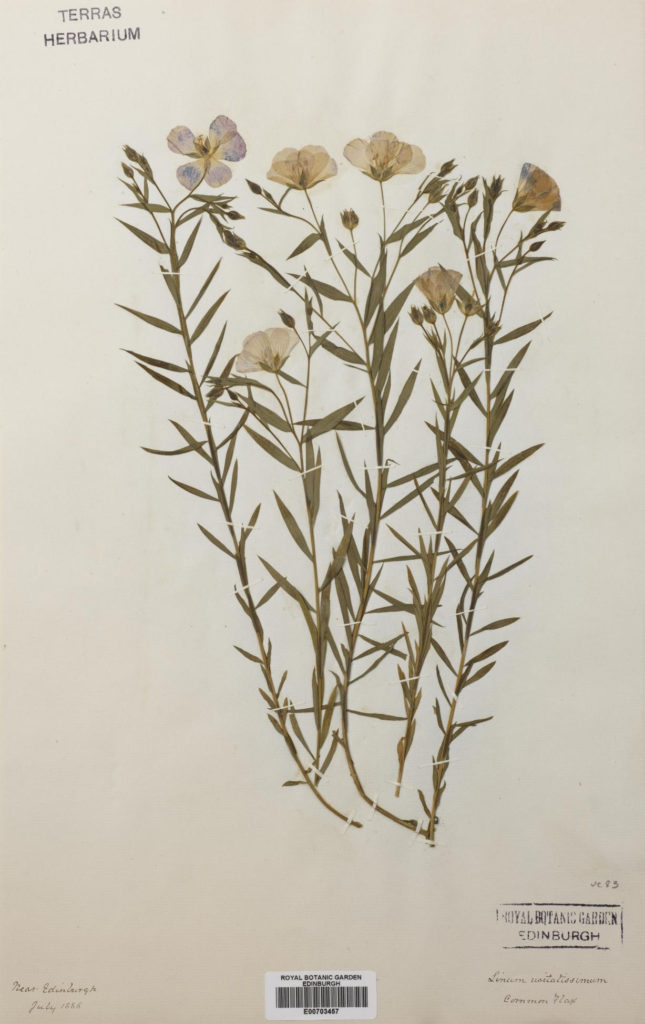The following blog was written by Linde Hess a digitiser in the Herbarium.
Since 2021 we have increased our digitisation capacity with the goal of getting to 1 million specimens imaged by Autumn 2024. Each digitiser is assigned a family of plants to work through. This series of blogs will spotlight the families that have been completed by a member of the team.
The Linaceae have a global distribution. Linum usitatissimum L., commonly known as flax, is widely used. Whilst its native range is Türkiye to Iran, it has been introduced into most temperate regions of the world. It is used as animal food (linseed), fibres (linen) and fuel (linseed oil). People in various parts of the world began weaving linen at least several thousand years ago.
Based on a comparison of 50 countries in 2022, Russia ranked the highest in linseed production with 1,766,559 tonnes followed by Kazakhstan and Canada. (FAOSTAT).
Recently there has been interest in reviving Scotland’s linen industry. Flax was once grown widely to support a thriving linen industry across Scotland but declined in popularity. With demand for biodegradable fabrics rising, farms in Scotland trialled three (long fibre) flax varieties in the Growing Flax for Regenerative Textiles field lab.

Our Collections
We have 5 cabinets filled with Linaceae specimens. Over half of our specimens were collected in Europe (including Britain and Ireland). We also have a good number of specimens from West Asia – the region where flax originated from.
At the start of Mass Digitisation, there already were 2362 entries in the RBGE herbarium catalogue, after Mass Digitisation there were 3469 entries. There are 42 type specimens of species in Linaceae.
Top 5 Regions
| No. of Specimens | Herbarium Filing Region |
| 1093 | Europe excl. Britain and Ireland |
| 750 | West Asia and Egypt |
| 425 | Britain and Ireland |
| 276 | North America |
| 141 | North Africa |
Top 5 Genera
| No. of Specimens | Genus |
| 2906 | Linum |
| 185 | Radiola |
| 122 | Reinwardtia |
| 94 | Hugonia |
| 71 | Anisadenia |
We only have four specimens of Roucheria in our collection. We also have relatively few specimens from South America.
